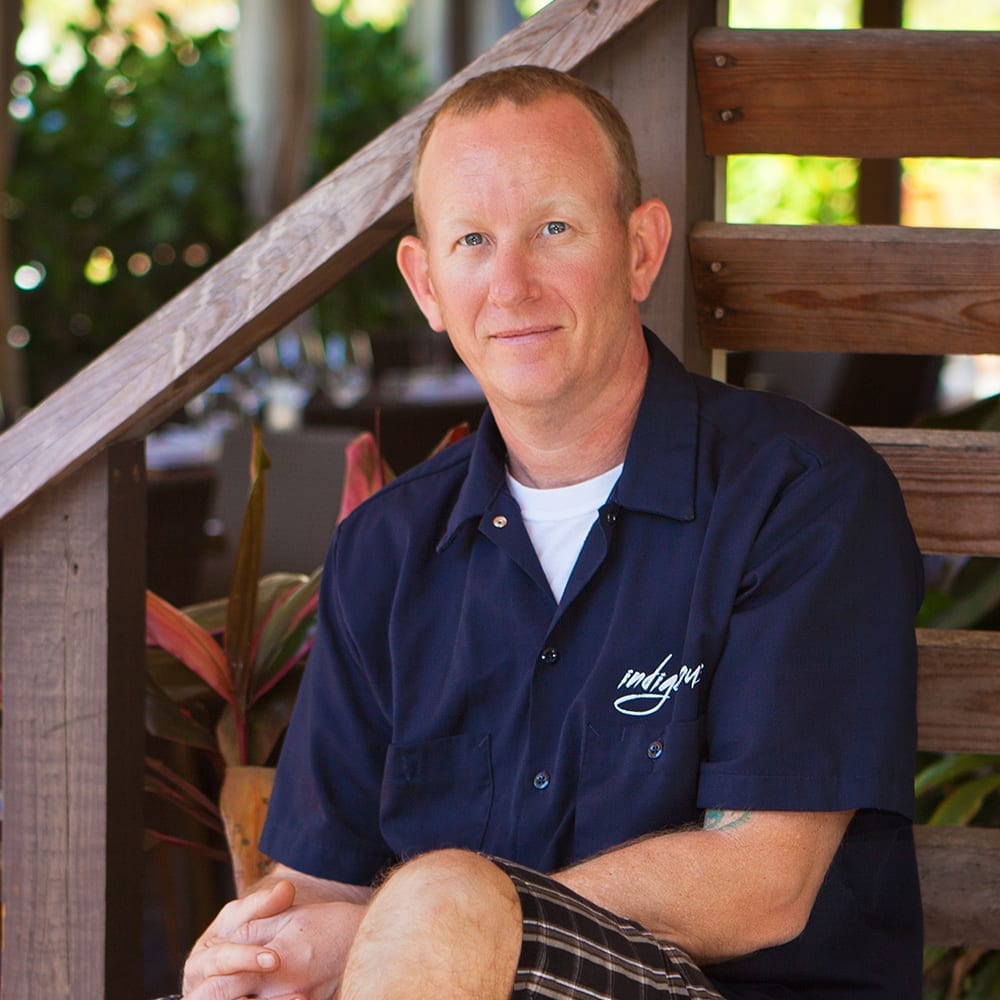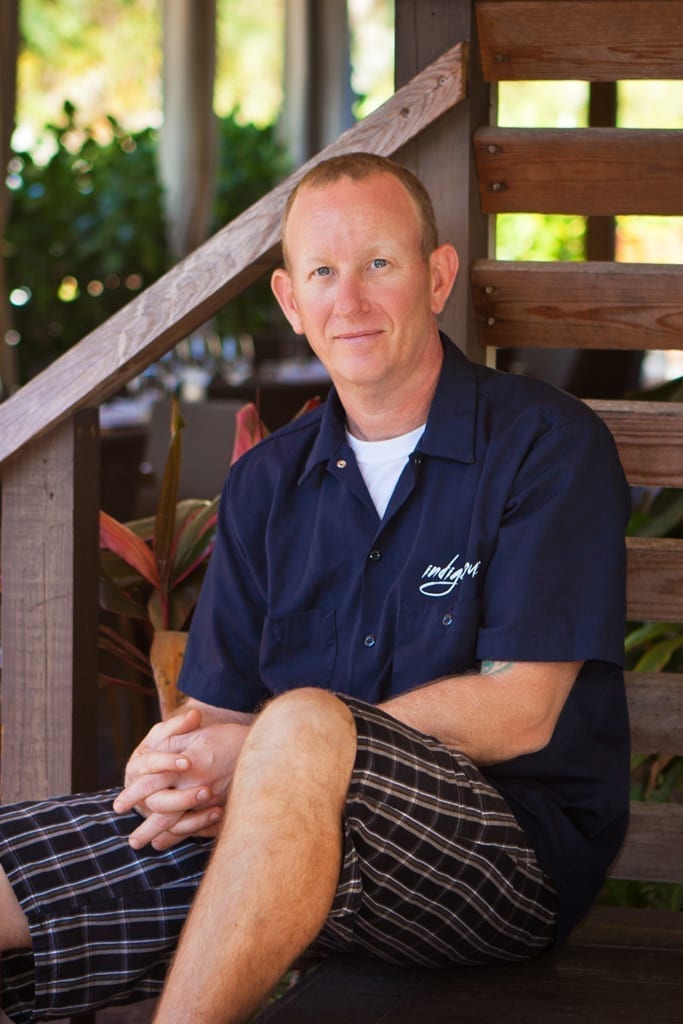Chef Stephen Phelps Puts the Ocean Front and Center

As the owner and chef of the acclaimed Indigenous in Sarasota, Florida, Stephen Phelps is all too aware of the challenges facing our oceans.
An award-winning chef, sustainable seafood policy advocate, Chef’s Collaborative community leader, Seafood Watch Blue Ribbon Task Force member, Chefs Move to Schools volunteer, and recreational fisherman, chef Stephen Phelps truly does it all when it comes to educating people about the food that they eat.
We were honored to work with Phelps, a James Beard Best Chef South semi-finalist in 2014 and 2015, at the annual Sustainable Seafood Dinner (formerly known as Trash Fish) for Chef’s Collaborative in Florida earlier this year, where Australis Barramundi was featured.
Learn more about Phelps’ unique three-pronged approach to sustainable seafood, how he gets customers to try (and love) farmed fish, his favorite way to cook fish at home, and more below!
Australis: How did you develop your interest in seafood?
 Stephen Phelps: I grew up in Cleveland, Ohio, and went fishing on lakes as a kid, both on Lake Erie and in Pennsylvania. When I moved to Florida, I was lucky enough to work with a young cook who was also a local fishing legend. Between this young fisherman and being in Florida, I was out on the water all the time.
Stephen Phelps: I grew up in Cleveland, Ohio, and went fishing on lakes as a kid, both on Lake Erie and in Pennsylvania. When I moved to Florida, I was lucky enough to work with a young cook who was also a local fishing legend. Between this young fisherman and being in Florida, I was out on the water all the time.
Going from freshwater fishing to saltwater fishing was like going from putt-putt golf to playing at Augusta, and I was fortunate to learn from the best.
While fishing on the coast, we’d eat everything: I’d ask the young fisherman, “Have you tried this?” and he’d more often than not say no. I always made us try what we caught and that really formed my love for the ocean and fishing and a curiosity of all the different species.
Coming from the Midwest, I realized that I was just miseducated or misinformed when it came to seafood. For example, I wasn’t aware of the variety of seafood available even living in Cleveland. We were all meat and potatoes.
How do you approach sustainable seafood in your restaurant?
The seafood that we serve at Indigenous falls into three categories: Wild, farmed, and invasive.
You need wild to support the local economy and fishing community. You need invasive because they are are negatively impacting wild populations. And lastly, you need farmed fish because overfishing and environmental factors, like invasive species and Red Tide, creates an uncertain wild supply.
When it comes to sourcing, no matter the category we look for products that have a great story and flavor behind it. As a Seafood Watch Blue Ribbon Task Force chef, I also pay close attention to environmental impact. For farmed species, I need to know everything I can. We really dig deep into our facts and try to source Green-Rated products. Doing our own research is important and chefs need to spend more time on it.
Local invasive species, such as Asian Carp and lionfish, have gotten a lot of attention over the past few years. I’m surrounded by a lot of divers and spear fisherman and learned about invasive species fairly quickly. We as chefs have an opportunity to say, “If it’s edible and delicious, we have a responsibility to market it.” My restaurant is an opportunity to educate people about the diversity of species and where they come from. It all comes down to giving consumers a choice: “Who do I want to support today?”
View this post on Instagram
You’ve described Indigenous as an educational restaurant: How do you communicate the importance of sustainable seafood to your customers?
Our goal is to always make sure guests understand what we do here at Indigenous and for them to apply what they learn here, elsewhere. For example, we provide origin and catch/farm method information about our seafood without customers having to ask for it, and by doing so, we teach them to ask questions to ask, “Where is a fish from? How was it caught?”
We serve 600 to 800 people a week. If just twenty-percent of those diners take what they learned at Indigenous out into the world and ask the right questions the next time they are at a grocery store or restaurant then we’re having an impact. Learning to ask those questions is a huge takeaway. Information can be really powerful.
How is your work with Monterey Bay Aquarium as a Seafood Watch Blue Ribbon Task Force member driving the sustainable seafood movement forward?
My work with the Monterey Bay Aquarium is also about education, for two different audiences:
- The Blue Ribbon Task Force meets regularly with the MBA’s science-based management team to discuss fish that we have been utilizing in our restaurants. For example, this past year, eight chefs from the Task Force met up in Charleston, South Carolina. Together we came up with eight or so new species that MBA hadn’t yet evaluated but that we are serving in our restaurants. Basically, we share what species we’re using and MBA sets up programs to research them.
- We also educate consumers and other chefs on the Seafood Watch standards of green, yellow, and red. I like to say that we’re the “Seafood Watch chef patrol.” It’s really an honor to be a part of the group.
As a chef and fisherman, what sustainable seafood policy do we consumers need to know more about?
The Magnuson-Stevens Conservation & Management Act: It was designed, more than 40 years ago, to create sustainable fisheries here in the U.S. Two parts of the legislation are in jeopardy. There is proposed legislation to:
- Open fishing back up for 100 species that have been protected for the last 40 years.
- Allow for modernized fishing methods to be used, including robot fish and drone fishing—which could be a catastrophe.
I, and other chefs are fighting back against these two changes to the Act (H.R.200 and H.R.2023). Last year, a group of us went to Washington D.C. to visit the offices of congressmen and women to raise awareness for these bills. We dressed up in our chef coats and communicated that our restaurants are successful because we use sustainable seafood. If we don’t protect our oceans and our seafood, we’ll go out of business. This really hit home with policymakers.
View this post on Instagram
Your involvement in sustainable seafood is varied and impressive: What has been getting the most traction?
Honestly, aquaculture. I’ve seen a major shift in people accepting it. Why is that? First, there are companies like Australis that have detailed information about what they are doing. This makes it much easier for me and my team at Indigenous to discuss it with with a customer at the table. Also, since farmed fish is of such great quality and versatile, we’re often able to serve it raw as well as cooked.
I also work with Dr. Kevan Main at the Mote Marine Laboratory & Aquarium on the aquaculture research that she is doing there. She’s now looking at the full ecosystem: You could have salad and a protein that came from the same place.
Final question: What is your go-to technique/method for preparing fish for a weeknight dinner at home?
I’m about as simple as it gets. There is nothing better than sprinkling a fillet with a little cornmeal, pan-frying it, and adding a squeeze of lemon.
View this post on Instagram